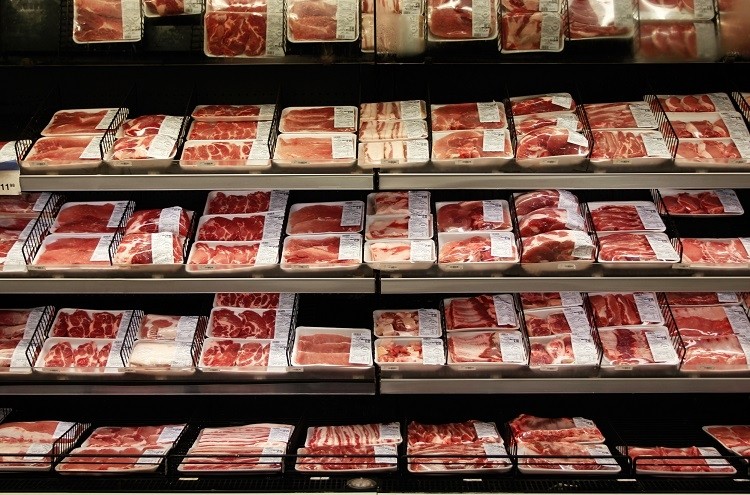Discover Fresh Cuts at Bagley Farms Meat Market Edwardsville IL for Your Following BBQ
Discover Fresh Cuts at Bagley Farms Meat Market Edwardsville IL for Your Following BBQ
Blog Article
Uncover the Art of the Butcher's Cut in a Modern Meat Market
In the ever-evolving landscape of modern-day meat markets, the butcher's cut has actually transcended its typical roots, merging old-time craftsmanship with contemporary techniques. What really establishes the modern butcher apart is their capacity to forge a deeper link between customers and the origins of their meat.
Advancement of Butchery Techniques
The advancement of butchery techniques mirrors a rich tapestry of innovation and adjustment driven by developments in technology, modifications in customer demand, and a much deeper understanding of meat scientific research. Historically, butchery was a craft passed down via generations, with techniques sharpened over centuries to make the most of return and taste. Nevertheless, the commercial revolution introduced mechanization, transforming traditional methods and making it possible for large-scale processing.
The mid-20th century saw butchery strategies further improved by clinical insights into muscle mass biology and meat aging, improving both inflammation and preference. Innovations like vacuum product packaging and refrigeration expanded item shelf-life, allowing butchers to diversify offerings and improve quality assurance. This duration additionally marked the increase of specific devices, such as band saws and meat slicers, which boosted accuracy and performance in meat handling.

The 21st century has actually introduced digital technology right into the butchery world. Electronic systems now help in tracking animal provenance and enhancing cuts to satisfy particular client preferences. Additionally, a rebirth in artisanal butchery has actually arised, mixing standard skills with modern knowledge to accommodate customers looking for honest and sustainable meat alternatives. This advancement highlights a dynamic interaction in between custom and advancement, meeting modern demands while preserving the craft's heritage.
Comprehending Meat Cuts
Comprehending the intricacies of meat cuts is necessary for both butchers and consumers seeking top quality and value. For butchers, exact cuts show ability and respect for the craft, making sure marginal waste and ideal return.

Comprehending muscular tissue make-up is crucial; muscular tissues made use of a lot more frequently by the pet have a tendency to be tougher and are best suited for slow food preparation techniques, while less-used muscles, like those located in the loin, are much more tender and ideal for cooking or roasting. Experience with these distinctions empowers consumers to make enlightened selections, enhancing their cooking endeavors.
Picking Top Quality Meat
Picking the right meat involves more than just selecting a visually attractive item from the display. The art of choosing top quality meat requires a discerning eye and understanding of details attributes that represent quality and quality.
Secondly, think about the marbling, which refers to the white streaks of fat within the muscular tissue. Proper marbling is a key sign of tenderness and taste, as it thaws during cooking, enhancing the meat's juiciness. Keep in mind, higher marbling often correlates with premium high quality cuts, such as USDA Prime.
Appearance is another vital aspect; meat must really feel strong to the touch, not slimed or extremely soft. In addition, be conscious of the aroma. Fresh meat ought to have a tidy, neutral scent, totally free from any type of sour or off-putting odors.
Matching Cuts With Cooking Methods

Alternatively, tougher cuts like brisket and chuck roast are rich in collagen, which damages down into jelly when cooked slowly. These cuts are suitable for braising or slow roasting, enabling the meat to soften gradually and create deep, complicated flavors. In a similar way, cuts such as short ribs and pork shoulder prosper with slow-cooking approaches, where expanded cooking times transform their durable appearances into delicious recipes.
Lamb shanks and oxtail, which require extended cooking to soften, are best prospects for cooking or slow simmering. These methods coax out abundant, passionate flavors while keeping dampness. By comprehending the special characteristics of each cut, cooks and home chefs alike can elevate their culinary productions, guaranteeing each recipe is both pleasing and memorable.
The Butcher's Function Today
Navigating the progressing landscape of the modern meat market, the butcher's role today expands beyond mere preparation of cuts. Contemporary butchers are cooking craftsmens, teachers, and advocates for sustainable methods. Going Here They link the void in between the ranch and the fork by guaranteeing ethical sourcing, understanding pet husbandry, and prioritizing transparency in the supply chain. This change reflects the expanding consumer need for high quality over amount, where provenance and pet welfare are critical.
In addition to crafting precise cuts, butchers now involve directly with customers, offering cooking recommendations and tailoring options to fit specific requirements and choices. Their expertise in meat aging, marbling, and flavor accounts empowers consumers to make educated decisions, boosting their culinary experiences. This tailored service exhibits the butcher's advancing function as a relied on consultant in the kitchen.
Furthermore, butchers are critical in lessening waste, using whole pets to develop diverse products such as sausages and stocks. This extensive method not only respects the pet but also aligns with contemporary sustainability goals. This way, the modern-day butcher embodies both custom and innovation, adapting to an ever-changing market while protecting the virtuosity and honesty of their craft.
Conclusion
Proficiency in understanding varied meat cuts and top quality indications empowers butchers to give enlightened recommendations, straightening details cuts with optimum cooking methods. By honoring historical techniques while welcoming modern needs, the butcher's role remains vital in today's innovative meat market.
Report this page